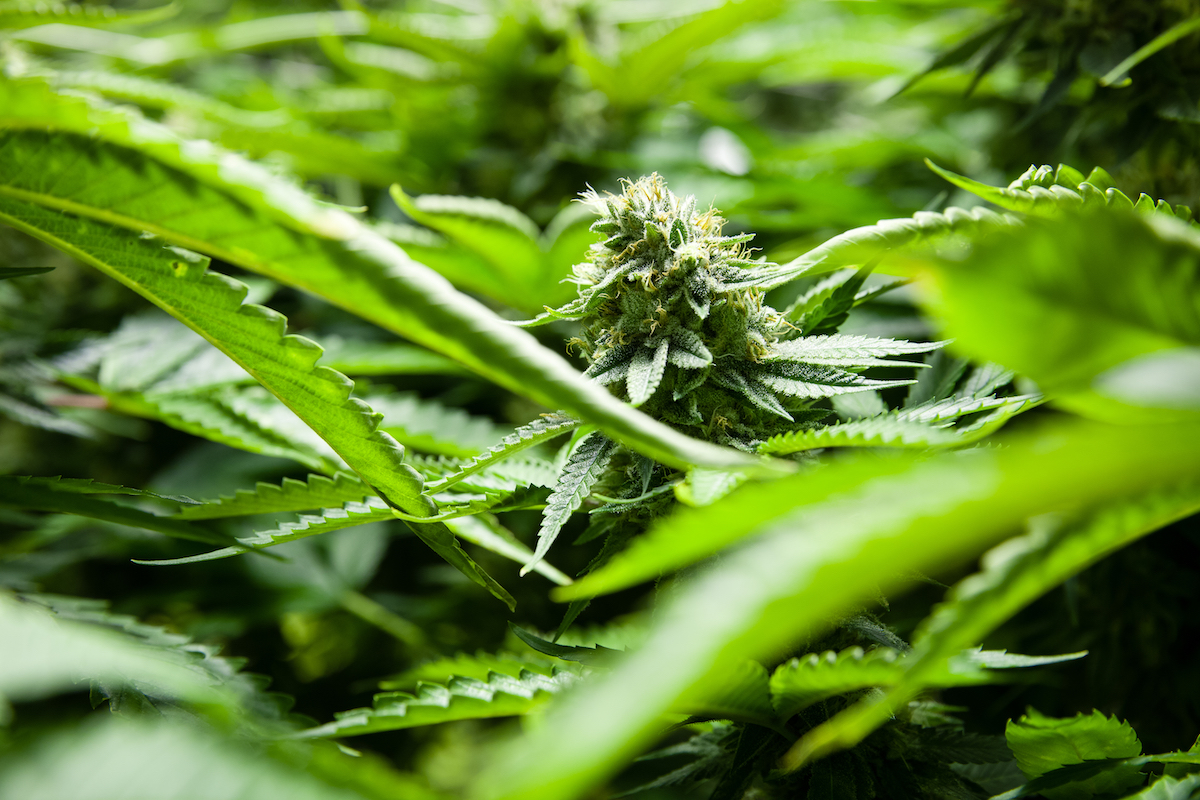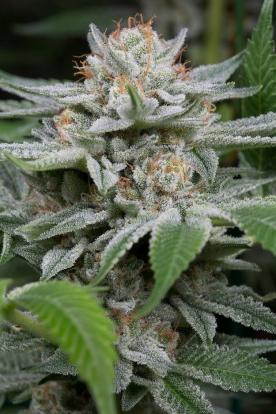- Chemically known as delta-terpinene, this terpene stands out for its fresh, woody aroma, with citrus and floral notes.
- Due to its pleasant aroma, it is commonly used in soaps and perfumes, and also as a component of some insect repellents.
- But it can also be effective medically: it can help deal with insomnia or even hinder tumour growth, and it also displays great antibacterial and antimicrobial properties.

A growing number of cannabis users are aware of the complex molecular chemistry surrounding this plant. Terpenes like terpinolene are the molecules responsible for the deep flavour and aroma of many strains. And although the main purpose of this family of chemicals is to be an evolutionary defense mechanism against pests and predators, terpenes have also been found to offer countless medicinal benefits that work in synergy with cannabinoids such as CBD and THC.
There are more than 20,000 terpenes in nature, and around 200 of them have been found in cannabis. Terpinolene is considered a minor or secondary terpene. Even though its name sounds similar to another terpene's, terpineol, they do not have a lot in common. Terpineol is a primary terpene in cannabis and in many other plants. On the contrary, terpinolene is probably cannabis' least-common terpene, although this does not mean that its role is insignificant: even in small quantities, terpinolene plays a key role in the taste and fragrance definition of many strains.
Terpinolene's aroma is more multidimensional than that of other cannabis terpenes. Linalool smells like flowers. Limonene smells citrusy. Terpinolene is characterised by herbaceous, piney touches, with citrus and floral hints. It can also be found in tea tree, conifers, apple, cumin, sage, rosemary and lilac. Terpinolene stands out for its intriguing fresh aroma, which makes it a perfect additive in soaps, perfumes and other beauty products; and it is also used as a flavouring and preserving agent in the food industry.

What can terpinolene do for you?
Unlike other cannabis terpenes, terpinolene is neither analgesic nor anti-inflammatory. However, research studies have found it to be antifungal and antibacterial, with great antioxidant and sedative properties.
Terpinolene has long been used as a natural antiseptic to treat superficial wounds and prevent inflammation and infection. But recent studies have found other previously unknown properties, for instance its ability to enhance cannabinoids like CBN, which can help improve sleep.
Terpinolene's main properties are:
- Antifungal and antibacterial. It inhibits bacteria growth and fungi propagation.
It is not surprising that one of terpinolene's strongest traits is its antimicrobial power; hence its presence in tea tree oil. A 1995 research study on cannabis already proved this, but it was not until 2015 that a study on Diplotaenia damavandica confirmed it. This plant has a 20% terpinolene content in its genetic composition. Findings verified its efficiency against E. coli bacteria, Salmonella and other pathogens. Another 2009 study showed that terpinolene, like many other terpenes, can also play an important role as a pesticide, helping to deal with mosquitoes, as well as beetles and weevils.
- Anticancer. It inhibits cancer cell growth.
Two different studies have discovered that terpinolene hinders cancer cell proliferation by regulating cell protein function. One of them, published in the journal Oncology Letters in 2012, revealed that the protein expression levels of a protein that enhances cancer cell spread had been markedly reduced thanks to the application of a natural treatment with sage and rosemary extract (both sage and rosemary contain terpinolene). This proves that marijuana not only helps prevent cancer but is also a malignant cell inhibitor.

- Sedative. It helps deal with insomnia.
Terpinolene is also renowned for its remarkable sedative properties, which makes it ideal for the treatment of insomnia or even anxiety. Nowadays it is combined with lilac and lavender to treat certain sleep disorders. Its sedating effect is mild but effective, so is perfect as well for the treatment of anxiety attacks and nervousness. A 2013 study published in the Journal of Natural Medicines evaluated the sedative effect of inhaled terpinolene in mice, proving that terpinolene is an effective central nervous system sedative.
- Antioxidant. It prevents oxidative cell damage.
And if that was not enough, a 2005 study proved that terpinolene is also effective against heart disease, which is still one of the main causes of death worldwide. As an antioxidant, it prevents LDL oxidation, which in turn reduces cell damage. Low-density lipoproteins, or LDL, also known as 'bad cholesterol', can accumulate in the arteries, with this being one of the most common risk factors for heart disease.
High-terpinolene cannabis strains
Terpinolene is more present in Sativa-dominant plants, as opposed to Indica varieties. When describing a terpinolene-high experience, what comes to mind is relaxation, productivity, creativity, lucidity, and emotional uplifting. But cannabis can produce a great range of effects: from a clear head to a foggy, cerebral buzzing that spreads across the body; it all depends on the other compounds also present in the plant.
Terpinolene can be found in many cannabis varieties, but only a small number are terpinolene-dominant. Some of these are Gorilla, Sour Diesel Auto, Green Crack and the legendary Jack Herer. Terpinolene not only improves their aroma, taste and effect, but it also provides numerous medicinal benefits in a unique way. It is definitely worth trying terpinolene-rich strains so that you can enjoy their effects in the flesh.








Comments from our readers
There are no comments yet. Would you like to be the first?
Leave a comment!Did you like this post?
Your opinion about our seeds is very important to us and can help other users a lot (your email address won't be made public).